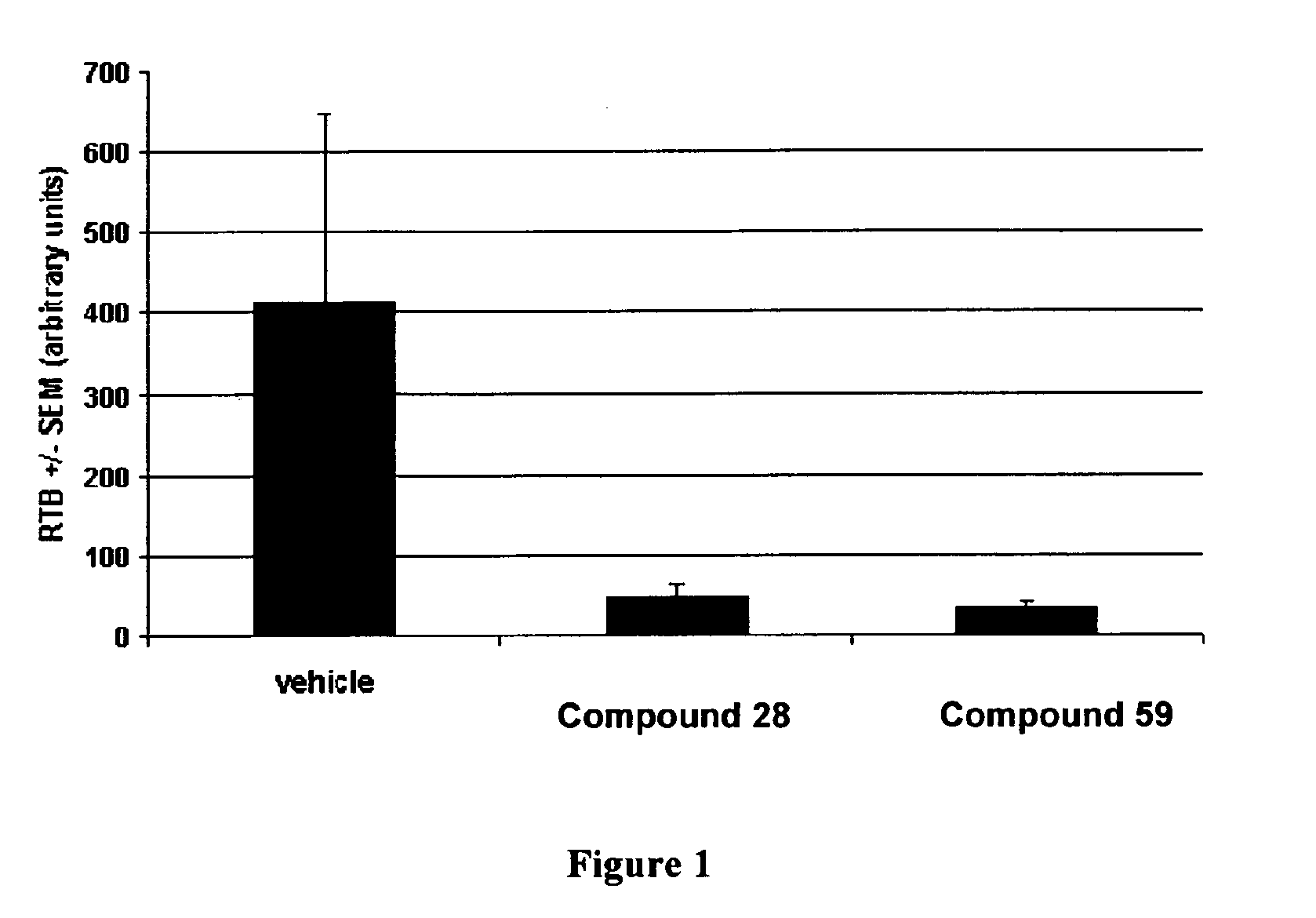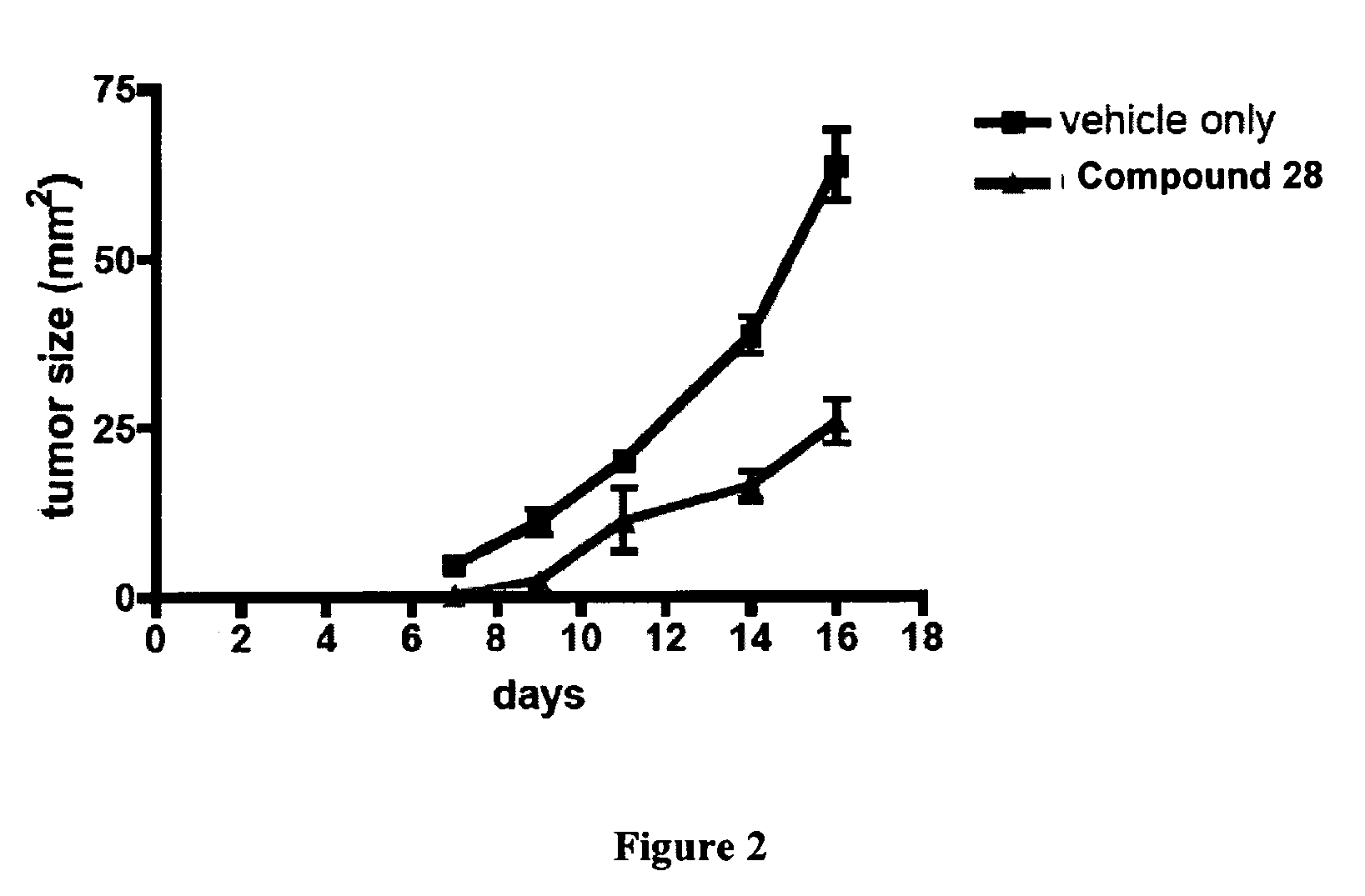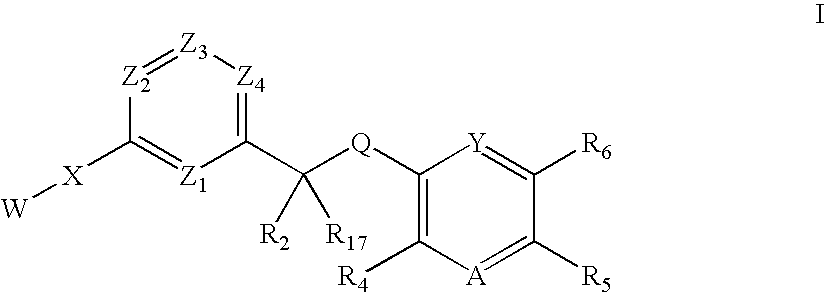Inhibitors of kinase activity
a kinase activity and inhibitor technology, applied in the field of pyridines or pyrazines, can solve the problems of not supporting angiogenesis into gel, affecting the gel formation of angiogenesis,
- Summary
- Abstract
- Description
- Claims
- Application Information
AI Technical Summary
Benefits of technology
Problems solved by technology
Method used
Image
Examples
example 1
[0185]To a solution of (1S,2R)-(−)-cis-1-amino-2-indanol (1.49 g, 10 mmol) in tetrahydrofuran (100 mL), cooled to 0° C., was added borane-N,N-diethylaniline complex (17.8 mL, 100 mmol) and the mixture was stirred at 0° C. for 1 hour. After this time a solution of 3′-nitroacetophenone (16.5 g, 100 mL) in tetrahydrofuran (300 mL) was added dropwise over 4 hours and the mixture was allowed to warm to room temperature over night with stirring. After this time the mixture was quenched by stirring with acetone (40 mL) for 1 hour after which it was concentrated under reduced pressure. The yellow residue was dissolved in toluene (250 mL) and washed sequentially with dilute aqueous sulfuric acid (1M, 4×100 mL), water (100 mL), saturated aqueous sodium hydrogen carbonate (100 mL), water (100 mL) and brine (100 mL). The organic solution was dried over MgSO4 and concentrated under reduced pressure to give (1R)-1-(3-nitrophenyl)ethanol (14.3 g, 86%).
[0186]To a solution of (1R)-1-(3-nitrophenyl)e...
example 2
[0191]A mixture of N-(3-{(1S)-1-[(6-chloropyrazin-2-yl)amino]ethyl}phenyl)-6-methylnicotinamide (74 mg, 0.2 mmol), 3-methoxyphenylboronic acid (40 mg, 0.26 mmol) and tetrakis(triphenylphosphine)palladium(0) (23 mg, 0.02 mmol) in toluene (3 mL) and n-propanol (1 mL) was evacuated and backfilled with nitrogen three times. To this mixture was added dilute aqueous sodium carbonate (0.15 mL, 2M, 0.3 mmol) and the mixture was heated at reflux for 17 hours. After this time the mixture was allowed to cool to room temperature and was diluted with ethyl acetate (20 mL) then washed successively with saturated aqueous sodium hydrogen carbonate (2×15 mL) and brine (15 mL), dried (Na2SO4) and concentrated under reduced pressure to give a yellow oil which was purified by flash chromatography (silica, ethyl acetate / methanol). The residue was dissolved in tetrahydrofuran (3 mL), treated with Si-Thiol for 1.5 hours, filtered through Celite and concentrated under reduced pressure to give the product (...
example 3
[0192]To a solution of the aniline (66 mg, 0.15 mmol) in tetrahydrofuran (1 mL) at room temperature was sequentially added methanesulfonyl chloride (0.014 mL, 0.18 mmol) and triethylamine (0.052 mL, 0.38 mmol) dropwise. The resulting suspension was stirred at room temperature for 2.5 hours and was then diluted with ethyl acetate (10 mL) and water (10 mL). The two phases were separated and the aqueous phase extracted with ethyl acetate (2×10 mL) and the combined organic phases combined and extracted with dilute aqueous hydrochloric acid (2M, 3×10 mL). The combined acidic extracts were basified to pH>12 with solid potassium hydroxide and were extracted with ethyl acetate (3×10 mL).
[0193]The organic extracts were washed with brine (10 mL), dried (Na2SO4) and concentrated under reduced pressure to give a yellow oil which was separated into its components by flash chromatography (silica, ethyl acetate / methanol) to yield the mono sulphonate (58 mg, 75%) and the bis sulphonate (15 mg, 17%)...
PUM
| Property | Measurement | Unit |
|---|---|---|
| particle size | aaaaa | aaaaa |
| pH | aaaaa | aaaaa |
| pH | aaaaa | aaaaa |
Abstract
Description
Claims
Application Information
 Login to View More
Login to View More - R&D
- Intellectual Property
- Life Sciences
- Materials
- Tech Scout
- Unparalleled Data Quality
- Higher Quality Content
- 60% Fewer Hallucinations
Browse by: Latest US Patents, China's latest patents, Technical Efficacy Thesaurus, Application Domain, Technology Topic, Popular Technical Reports.
© 2025 PatSnap. All rights reserved.Legal|Privacy policy|Modern Slavery Act Transparency Statement|Sitemap|About US| Contact US: help@patsnap.com



